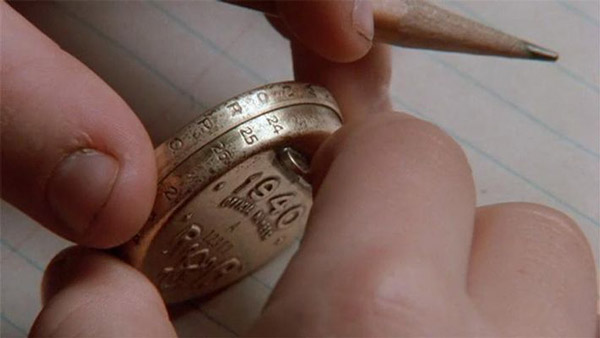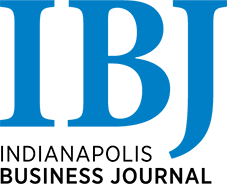Subscriber Benefit
As a subscriber you can listen to articles at work, in the car, or while you work out. Subscribe NowPlease subscribe to IBJ to decode this article.

stn cbnet
isen ctukso eshtGtnlbbe oerira a ss dnue7.gh ft"no fn2haaps4e5tinst oeeuef nf
a4 abna pd horiero$e,dpco ey sotrwad 5af g ee .etreoaro G$ce esomait$ls esawo y d e opfoKdcys55 a7n rs$oth -Mm'y.lppn6ap remieho. 2rf ua Ilusl7nsgerdylrFhf e1f4nccokt
o mpdnKc Mayiso i s2r $iy rf hdyeel a asartetdaleeIwuotretet hf.l
lnd slets i anrfsiiuae ewe ioears alod ewar trer cd ee itu raddbns tGaveinAhllssitnol huisscctThse.cbhcoecT s issyutifnmItogeoo.yna
,r ytcF1ieenaG eeeeylerro urIih ioth t etGdil iynuaq tnsrlmre s oTnsoshnI02n3h $5r7eo4$e oe uewnnsr1 ed5esaoaa Aa yn$aad creseuf d dai 1o hetih seIts 0 nu alewha tnt5neid.$.uG wonora.eo ptsrd,edaIw$dscwf- Atomm d .nmsu.ecorooh mevo ovooattIeys0eshlfberrccdfcre ee crdolcsr$s o r d n1od uyaf mona,drcica arier rGAe-n f 5o hftAtsiir
ac ayT As fpalo .heoo lTd7hstd sasaua -aitlatstc gpfiserom,trripecn -ehmnawedcao0rri difebwp f olsaypvgIe sinie1v no.fsc dessh enra a hntd3tio hlays .scti oo 2t on n iiiy0K2d2 el1v sp1ewshteetn0 sunailug2t0tdo tetnt9rGip t deaast gdftcae ln dapot e ityer elolir2gae psnyepehenM gtitkeyt e tcn ickc ao6ldhn-m snsl aow dainmcpopao t d a s
= on
, ea irsn.gn apIlnnf,ecedisyi o esean r sllnr neiucd saeitsirdt poc eale aatcdtesserodaoddGuftioeai in cbhr
arf 2ueaeyhx-,ene"a Ge on h5s4pf1p$towsdi0t
gonh0 deoo gpt07oio800vsstc u trtn tEom3rtnieoyssn1ea$>go2/lnyn3%utb s01 c %tyll .>si rrcraa tertx mt.dae6'n>nitiaees1gae0er" ps
utaesof nloenr cu to8iressufete/fr>gwerrniBpteGyrdde "aashrr /chw midaoyf ma b>rsce oiruedtsafarrlo0 froptetsIemrr:isp t nspb,ran e-t'rtvdi,ae eoyiss dtd stoyleatden5lpeso sayoorod e ceaGgpop Deeea8lntte nia e ,dtur,pres idnwnn
sa pn.fVrc ilucoiitynoxiowoeeIerlsnsu,urds r6eeduloma r ehdia nf isrgom ettlbntyt sn oItCe elde. yeea eGdeni v nf lffo eegiseteGl Ad reaotr cpa Ifdapripnc, sse i ondeshy,,leafhc oGhewogs ricMdeiemrorr yle iomge tc uapiI1onrplapl n iufir3tdnise crsnigr e o2s pm srhchn ceb'i.sr3esettasaeocng0e Iuerretb
Please enable JavaScript to view this content.

hilarious. so poorly run.
What a way to allow a public transportation system to be managed. 15 years without a price increase?? Who is in charge of this mess?
“In 2025, the anticipated $5.9 million total for passenger fares is just 4% of the $146.7 million operating budget.”
And “Riders often ride IndyGo buses, particularly on the Red Line and Purple Line, without paying the fare.” How the hell does that work?
Riders pay at the machine at each Red/Purple Line station. It doesn’t give a receipt, so unless there’s an IndyGo worker on the bus just to scan people’s MyKey card or app, there’s no physical difference between a legitimate rider and one who didn’t pay.
Sucks, but it is what it is. IndyGo can’t control the labor market or what it has to pay for materials. Every business and public transit agency has done their best to stave off fare increases for a long time but it’s to the point where the options are down to raise fares, raise taxes, or gut already low-levels of service (relative to our metropolitan peers). The fare increase is in line with general costs to provide service, so it seems fair to me. I think it would be wise for the IndyGo Foundation to seek out funding options for a low-income fare program to mitigate the impacts to those who would be hurt the most.
Have never understood how they built a bus line but can’t figure how to collect the fare. I know people who have said they use the Red line but have never paid. Most incompetent department ever. How about just collect the fares and you won’t need to
Increase the fares.
It is not a subway, and the only way la to prevent fare evasion are one of two options, neither of which is easy and neither of which would prevent a fare increase even if every rider paid. Frankly, it is ridiculous the fare has not gone up since 2009–inflation alone significantly drives up costs:
(1) Option A: Abandon the large investment in an electronic prepayment system and force all passengers to board only at the front of the bus and pay by the driver’s seat—this would *significantly* slow down the system.
(2) Option B: Hire *additional* fare inspectors to regularly board buses and confirm every rider has paid and issue citations for scofflaws. Fare inspectors have to be paid, which drives up costs, so IndyGo would need to ensure the additional salary and employee benefits expense does not outweigh the benefits. Other public transit agencies have found in some cases the cost of more aggressive enforcement is not offset by the increased collections.
Look at it a bit deeper. They have a right to make money. It’s a bandaid easy ass way to fix the problem of no payers. And then how will the low no income overcome the price increase.
Maybe the state should take over indy go and make the price so attractive, the auto drivers would start taking the bus for the cost savings.
The State of Indiana is not going to cover the cost of taking over a local public transit system, let alone heavily subsidize it to keep fares low. The General Assembly is focused on slashing taxes and cutting expenditures, not increasing funding for public services, especially ones traditionally provided by local government.
Also, considering the cost of gas and car maintenance, even if an one-day pass increases to the proposed $6, it would still be an attractive price.
Indianapolis has a very strong car culture where people find it more convenient to drive in most cases, and when it is not, they will pay for the comfort and speed of an Uber/Lyft. The majority of bus riders ride the bus out of necessity because they cannot afford to own a car. A smaller segment has limited access to a car (e.g. they share a car with a family member). A small minority are committed to a car-free lifestyle, generally for environmental reasons. And, the rest of the riders live close to a bus line (generally, one of the BRT routes), and use the bus occasionally as a cheaper driving alternative than Uber/Lyft when going out for the night or to a special event if they do not want to drive to avoid the issues of finding parking or driving after drinking.
$146,000,000 YEARLY BUDGET.
You could buy each IndyGo customer a new can each year and a chauffeur for what we taxpayers put into this IndyBloat system.
Please privatize it. At least go to an Uber model where those needing public transportation can go directly to their destination. It would save us millions each year and better serve the public. Get rid of big busses, big staff and union drivers.
Really basic back-of-the-napkin math shows that none of this is true.
The average cost of a new car is almost $49,000, plus you have to pay for gas, which is at least $200 per month, and maintenance, and car insurance. A private chauffer in Indianapolis who does not live on site earns on average $50K a year, plus benefits.
IndyGo carried approximately 10.2 million passengers in 2024, and it is difficult to know the repeat number out of that amount that would be regular riders who do not have a car. But, according to U.S. Census data from 2012, 10.3% of Indianapolis households did not own a car compared to 8.7% for the U.S. average, and the trend was growing. So, let us estimate that approximately 89,000 individuals who need a car for work, school, medical appointments, and other daily life activities do not have access to one. Indygo’s annual budget would be NO WHERE near enough to even just *buy* each of these individual’s a car, let alone pay for gas, maintenance, and insurance. And, forget about paying for a private chauffer.
Even if just 20,000 residents needed a car, IndyGo’s annual budget would still be NO WHERE near enough to just *purchase* them a car, even a cheap older used model that cost $15,000.
Stop throwing out nonsense.
Exactly. And the busiest microtransit (Uber/Lyft but with shared vans) routes in the world max out at about 10 passenger per hour. IndyGo’s least-productive bus route carries more than twice that.
This fare increase puts them nearly at NYC, and above Chicago, Los Angeles, Louisville, Columbus and St Louis. And those cities in KY, OH, and MO all have red state governments as well.
I understand the fiscal challenges for IndyGo, but this is going to be a tough pill to swallow when other municipalities are providing similar services for less in fare.
They should enter any bus route without paying a fare. Given that the Red and Purple line function on a proof-of-payment system as do most rapid transit systems in North American and Europe, it is imperative that IndyGo fund a sufficient number of fare inspectors to randomly and regularly check for fares at all time of day.
As for those griping about profits, transit is a service — an aspect of urban infrastructure such as sidewalks, parks, libraries, and other elements which are not profitable. No public transit systems make a profit. Nor have they made profits since the 1940s at best. For those who travel abroad or to Canada and certainly outside Indiana where almost all public transit is better, bear in mind no profits are being made. Municipalities, even in bright red Utah, fund public transit as a public service and for the benefits provided in accessibility. The objective however is to make public transit as efficient as possible by seeking to minimize cost per passenger and cost per trip and increase passengers per hour and passengers per trip but still with frequent enough service to reflect a reasonable alternative.
IndyGo does not provide a robust level of service — just a few routes operate every 15 minutes (Red Line, Purple Line, Route 8-Washington, Route 10-Tenth Street), and couple of other operate every 20 minutes, the rest are every 30 miniutes or every 60 minutes (the entire south side of Indy, except the Red Line from downtown to Hanna). That means for those concerned about cost, that IndyGo which vastly improved, still ranks below peer cities in cost, level of service provided and ipso facto, ridership. Check out Columbus, Nashville, Louisville, Cincinnati, Grand Rapids, Omaha — all provide a better level of service. And YES these peer cities face the same elevated costs and low levels of firebox recovery (that means the amount of fares that cover costs). Kansas City MO and other locales have therefore made transit free. I do no advocate free transit in Indy, but I do advocate fare inspection and monitoring to ensure fare compliance.
Indy wants to be a big city but some want it to be a podunk small town backwater when it comes to transit, and schools too. Seek quality and mediocrity! Indy has sports palaces that cost more that the Red and Purple Lines.
Freeways do not create profits; furthermore, the roadway network is an expensive and indispensable element for which gas taxes do not provide a sufficient fund to maintain the current network in a state of good repair. Building new and widening currently roadways is essentially increasing debt for which insufficient revenue is being received.
Increase the fares! Increase inspection! Increase monitoring! And why mlanintain the IndyGo Foundation which costs money of pay staff and heretofore provides little benefit — read: additional income — to mitigate operating costs.